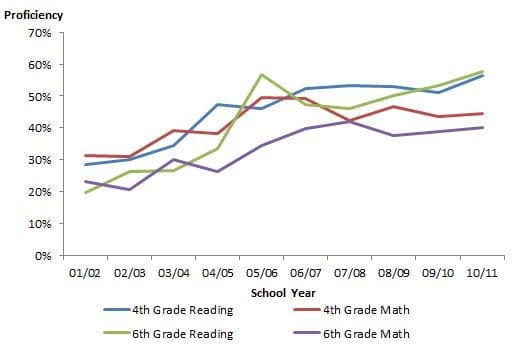"For too long we've been a compliance-driven bureaucracy when it comes to educating students with disabilities. We have to expect the very best from our students—and tell the truth about student performance—so that we can give all students the supports and services they need." – U.S. Secretary of Education Arne Duncan, March 12, 2012
We agree, Mr. Secretary. Here in Ohio, we’ve seen special education costs skyrocket over the last decade; increasing over $1 billion dollars, a 50 percent jump. In contrast, non-special-education spending increased only 17 percent during the same period. Today, special education eats nearly 20 percent of Ohio’s entire K-12 education spending pie, up five percentage points from a decade ago.
Are Ohio’s special education students benefiting from all this spending? Not if you look at their student achievement. Consider, the test performance data for fourth- and sixth-grade students with specific learning disabilities (the largest subgroup of special ed students):
Figure 1: Improving test scores for primary school, learning-disabled students (2001-02 to 2010-11)

Source: Ohio Department of Education
Clearly, on the up and up.
But consider now the tenth-grade performance of students with learning disabilities:
Figure 2: Declining test scores for secondary school, learning-disabled students (2001-02 to 2010-11)

Source: Ohio Department of Education
Not so great.
The rise in Ohio’s special education spending seems to have improved primary school SPED performance. Yet the declining high school data pose a sticky distributional question about special education spending: Are we overspending in primary grades, while ignoring high school students’ needs? If that’s the case, we’re effectively losing primary school gains, while also burning through the special education budget—an increasingly large piece of the overall education budget.
As Secretary Duncan suggests, the truth about special education should be told. And in Ohio, the truth seems to be this: Special education is driving up overall education spending and there is an apparent disparity between SPED at the primary and secondary levels. It’s time to seriously take stock of special education and ask if it can be done smarter and better.

